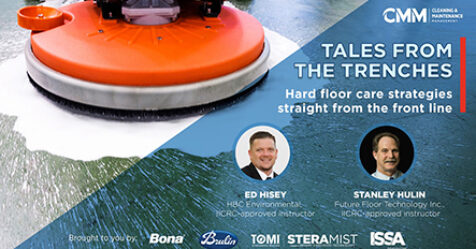Considering customers, employees, and shipments create foot traffic for almost every business, it’s no surprise that floor maintenance consumes 80 percent of a crew’s time and budget.
But let’s compare that to a more surprising stat: It costs the average business US$1,000 to $1,200 to remove one pound of dirt.
This leads us to the following question: How do you keep more dirt out? The Answer: Proper entryway mats.
Dirt, snow, salt, and slush carried in on footwear can be tracked more than 150 feet into buildings, and once moisture evaporates, what’s left can be anything from simple dry soil to crystallized salts. While dry soils are simpler to remove, they can require time, depending on the amount. Removing salt and products used for melting snow and ice can become time-consuming, and left untended for too long, may physically damage flooring to the point that it must be replaced.
In order to avoid damage and reduce floor care as mush as possible, let’s define the different types of floor mats and their functions:
Scraper mat: Using a rough surface and plastic construction, this mat removes heavy debris and soils from footwear. It’s best to place these at exteriors that are partially enclosed and lead to an entryway.
Transitional mat: Constructed of both plastic and absorbent fibers, this mat continues the process of soil removal as well as beginning to dry footwear. They should be placed between exterior and interior doors or immediately after the scraper mat.
Absorbent mat (also known as a walk-off mat): The fibers of these mats are commonly made of cotton and other absorbent materials, and complete the drying process for footwear. Place these after the transitional mat and in the paths of greatest expected foot traffic.
The following is a good general strategy for proper entry way mat placement.
Scraper mat: Place these in a partially enclosed area, outside for 5-10 feet.
Transitional mat: Place these between door sets or immediately after the scraper mat for 3-8 feet.
Absorbent mat: As a final step, use these to complete interior coverage for 10-12 feet.
There is no silver bullet, but when used properly, mats can reduce the time and cost of cleaning, avoid property damage, and reduce the propensity for slip and fall accidents.



